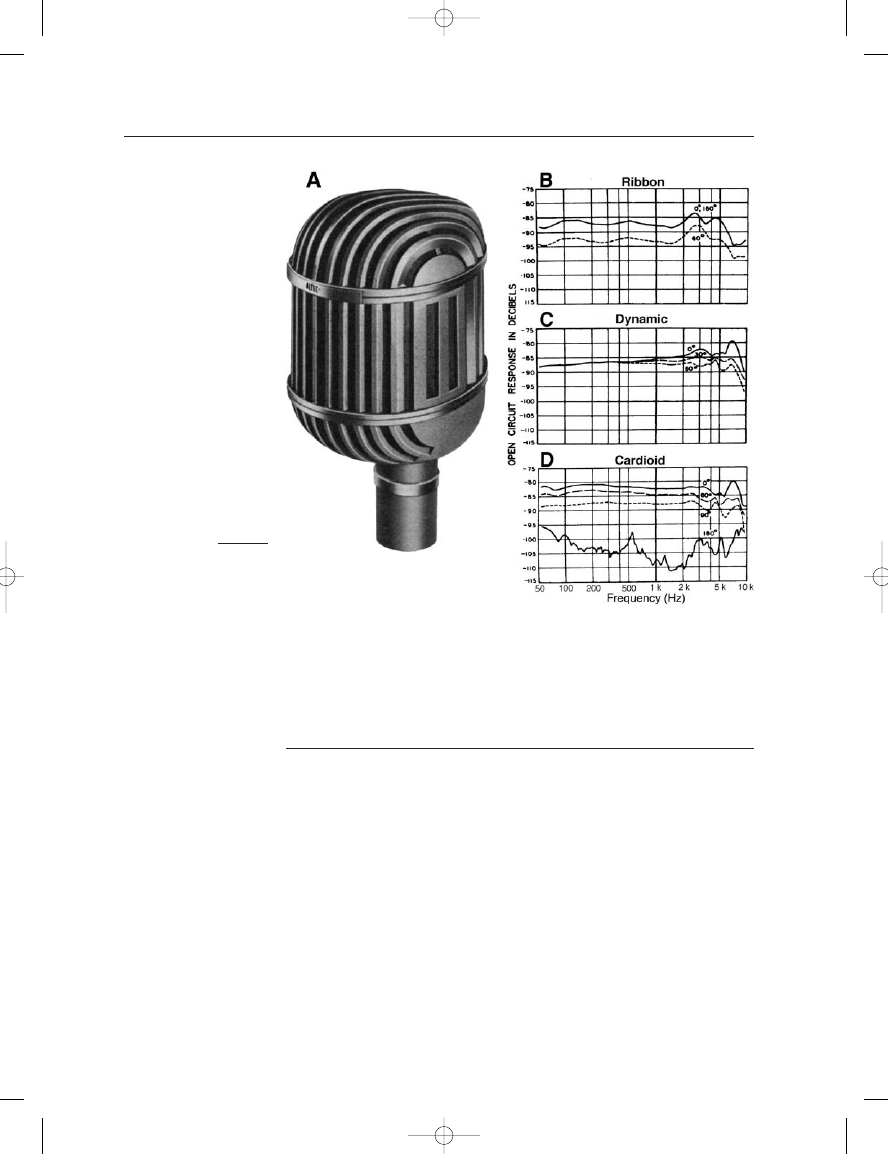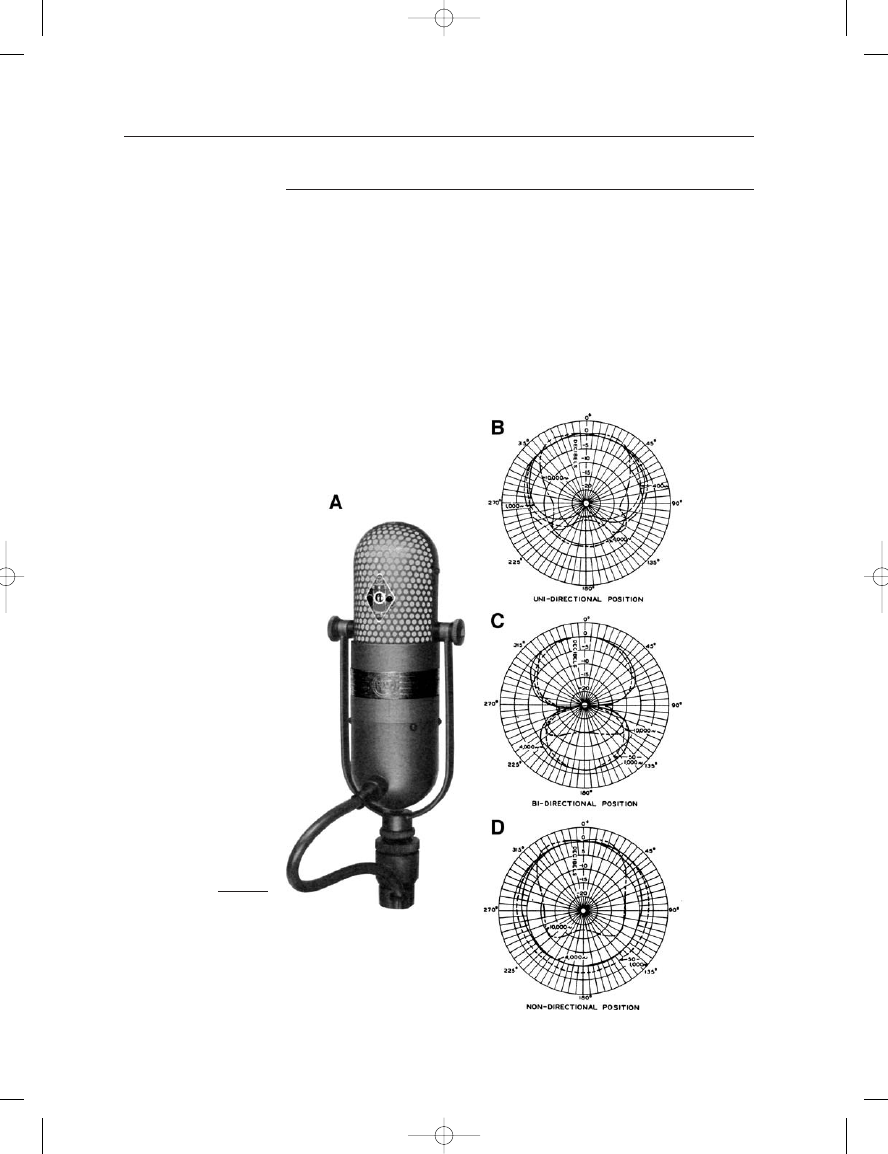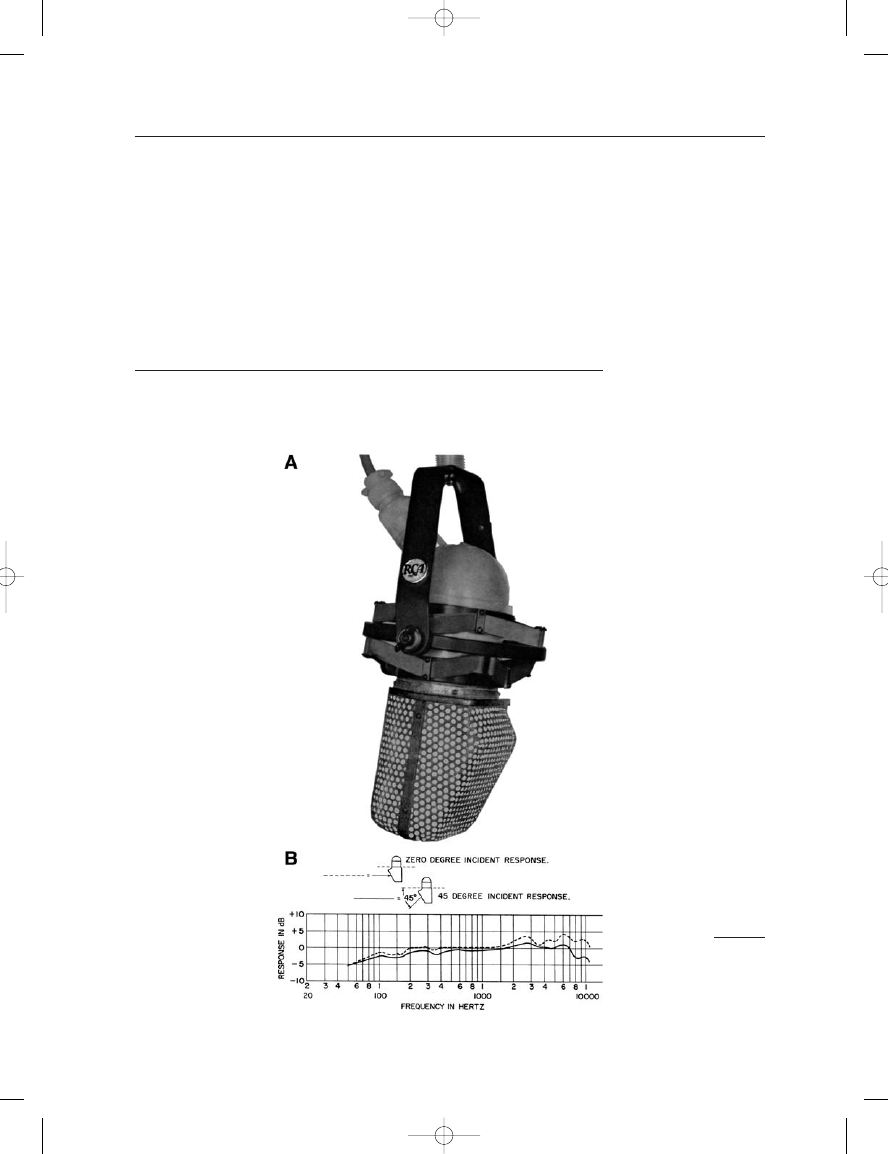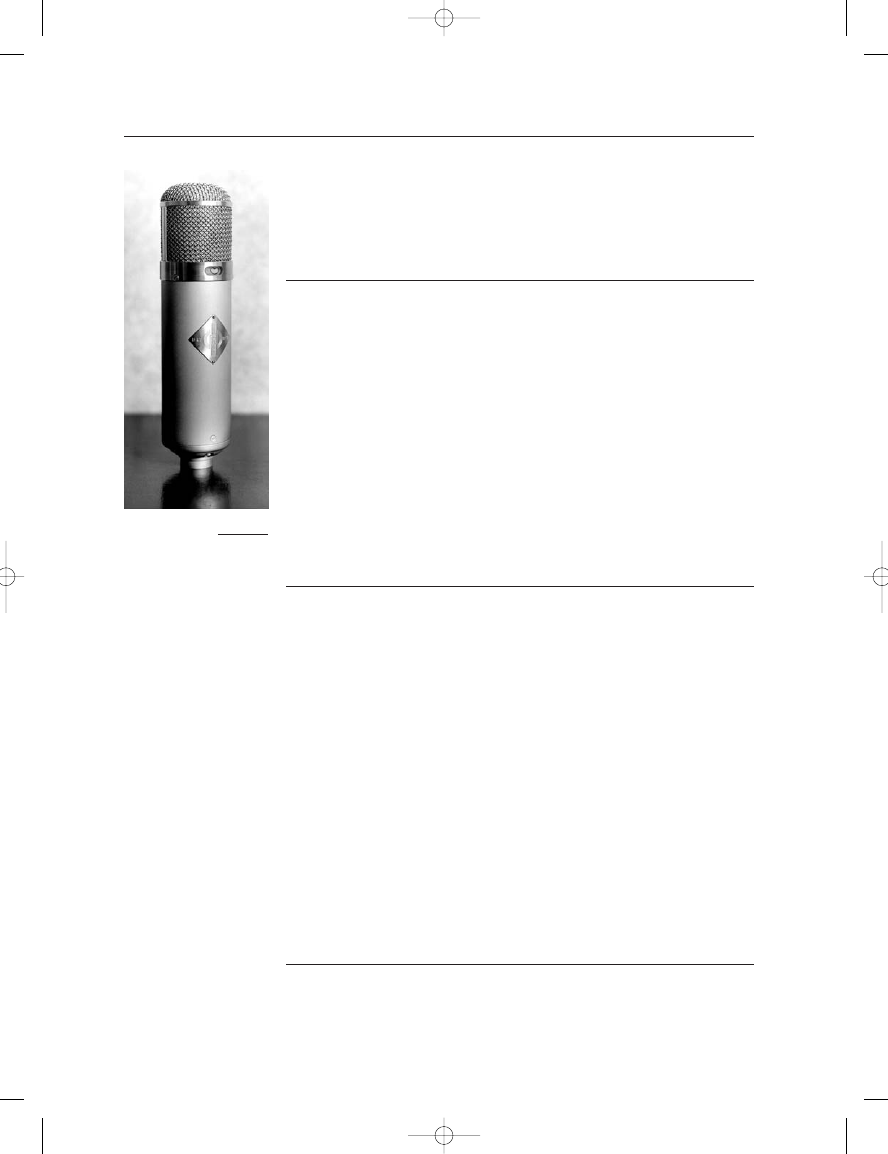ВУЗ: Казахская Национальная Академия Искусств им. Т. Жургенова
Категория: Книга
Дисциплина: Не указана
Добавлен: 03.02.2019
Просмотров: 17244
Скачиваний: 51

21: Classic Microphones: The Author’s View
343
had earlier assumed the manufacture and sale of Western Electric loud-
speakers and amplifiers in the late 1930s.
RCA MODEL 44
The original A-version of this most famous of all ribbon microphones
dates from 1931, with the BX-version following in the mid 1930s. Few
microphones are as distinctive in overall shape, and its “box-kite” shape
has been copied many times. Olson’s dedication to the engineering sim-
plicity of the ribbon was a hallmark of his illustrious 50-year career at
RCA Laboratories, and a quick survey of Olson’s writings will under-
score the variety of concepts, models, and design challenges that he
solved using only ribbons. The microphone became a broadcast favorite
during the 1930s, lasting well into the 1960s. It was also a staple in the
recording studio from the 1930s onward and more than held its own
against the onslaught of German and Austrian capacitor models as the
LP era got under way.
You will find 44s, lovingly maintained, in large recording complexes
everywhere, where they are used primarily for close-in brass pickup in
FIGURE 21–5
Western Electric
Model 639. (Data from
Tremaine, 1969.)
Earg_21.qxd 14/9/04 3:07 PM Page 343

large studio orchestras and big band jazz groups. Many engineers feel
that the directivity and proximity effects of the 44 provide a warmth and
mellowness on loud, hard-driven brass passages that can’t be easily
attained using capacitors, no matter how many equalizers you may
throw at the problem!
The rugged look of these microphones belies their essential fragility.
The ribbon elements themselves are low-frequency tuned and as such can
be deformed under conditions of mechanical shock. The perforated pro-
tective metal screening is also very prone to denting if the microphone is
dropped. A front view of the microphone is shown in Figure 21–6A, and
typical on-axis response is shown at B. RCA ceased manufacture of this
model in the early 1970s.
THE MICROPHONE BOOK
344
FIGURE 21–6
RCA Model 44-BX.
(A from Tremaine, 1969; B
from RCA specification
sheet.)
Earg_21.qxd 14/9/04 3:07 PM Page 344

21: Classic Microphones: The Author’s View
345
RCA MODEL 77
Virtually everything we have said about the RCA 44 applies as well to the
77. The microphone was designed by Olson’s group in the 1930s as a
unidirectional (cardioid) model for those applications where the figure-8
response of the 44 was not appropriate. The microphone provided a far
more varied design test bed than the 44, and the 77 ultimately went
through 7 iterations (Webb, 1997). A rear view showing the pattern adjust-
ing control is shown in Figure 21–7A, and three switchable polar pattern
families are shown at B, C, and D.
Earlier models of the 77 used the technique shown in Figure 5–9 to
attain cardioid response. One portion of the ribbon was exposed on both
FIGURE 21–7
RCA Model 77-D: back
view of microphone
showing pattern
adjustment screw control
(A); polar response (B, C,
and D) (Data from
Tremaine, 1969.)
Earg_21.qxd 14/9/04 3:07 PM Page 345

sides and responded with a figure-8 pattern. The other half of the ribbon
was shrouded on one side via a damping tube and responded as a pres-
sure element. The two combined to produce a cardioid pattern. Later
models used a variable approach as shown in Figure 5–15A. Here, the
shroud extended over the entire back side of the ribbon, and an aperture,
adjustable by a movable vane, provided the amount of gradient compo-
nent required to attain a desired first-order pattern. As we see at B, C,
and D, the patterns were fairly accurate up to about 4 kHz; above that
frequency the back-side pattern response was only approximate.
RCA MODEL MI-10001
This 1947 model was based on the later 77 designs. It had a non-
adjustable shroud tailored to produce a nominally flat cardioid pattern
aimed downward 45
. It was intended for boom use on motion picture
THE MICROPHONE BOOK
346
FIGURE 21–8
RCA Model MI-10001:
view of microphone (A);
response curves (B) (Data
from Tremaine, 1969.)
Earg_21.qxd 14/9/04 3:07 PM Page 346

21: Classic Microphones: The Author’s View
347
sound stages and was produced in limited quantities. It became the first
microphone to be supported in field literature by a comprehensive three-
dimensional family of polar response curves, of which only two are
shown in Figure 21–8.
NEUMANN MODEL U47
This multiple pattern microphone was introduced to the US market in
1948 under the trade name of Telefunken, a German distribution com-
pany, and gained a high reputation for excellence in both popular and
classical recording. Its introduction coincided pretty much with the
development and advent of the LP record, and it was highly touted (often
as a choice item for LP cover art) for its extended high frequency response.
At a price tag of about $500 (in 1948 a great deal of money), it soon
became a favorite of the recording elite.
The microphone, which is shown in Figure 21–9, provided both
cardioid and omnidirectional patterns. A close relative, the U-48, was
introduced in the mid-1950s and offered cardioid and figure-8 patterns.
By the late 1950s Neumann began marketing its products directly in
the US, and the Telefunken brand name was replaced by Neumann. It
remains one of the most sought-after classic European capacitor models.
NEUMANN MODELS M49/50
These two models are completely different but share the same outer
packaging envelope. The M49, introduced in 1949, was the first capaci-
tor microphone to offer remote pattern switching via a control on the
power supply, as can be seen at B in Figure 21–10. The M50, which is
described in detail in Chapter 3 under On-axis Versus Random Incidence
Response, was designed to solve orchestral pickup problems when posi-
tioned in the transition zone between direct and reverberant fields of the
ensemble. Its capsule is mounted on a plastic sphere and behaves as a
pressure element up to about 2.5 kHz. Above that point the response
becomes gradually more directional and rises in output, attaining a
6 dB shelf in response relative to mid and lower frequencies. The inten-
tion was to maintain a certain amount of sonic intimacy when recording
at normal distances in spaces with moderate reverberation.
The M50 became the microphone of choice for both British Decca
and EMI classical engineers, and the so-called Decca tree, plus outriggers,
made use of five M50s. Today, it is a mainstay of classical orchestral
recording in large spaces, and it is also widely used for pickup of stereo
ambience in large studios and soundstages.
AKG ACOUSTICS MODEL C-12
AKG was founded in Vienna in 1947 and quickly became a major player
in the field of recording and broadcasting microphones. Details of the
FIGURE 21–9
Neumann Model U47.
(Photo courtesy of
Neumann/USA.)
Earg_21.qxd 14/9/04 3:07 PM Page 347